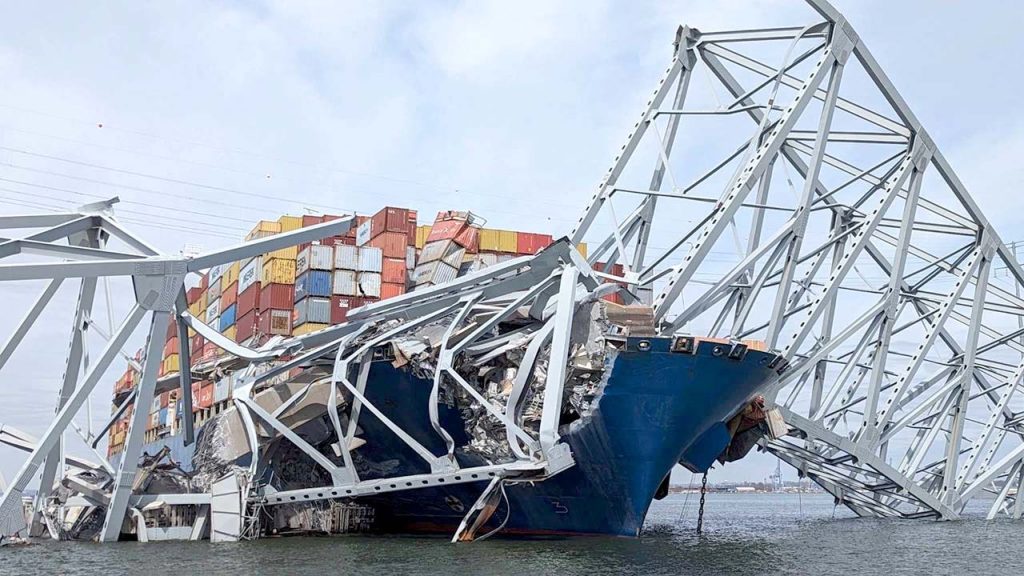Maryland Governor Wes Moore, alongside Baltimore City Mayor Brandon Scott and first responders, stated that the conditions following the collapse of the Francis Scott Key Bridge remain unsafe for rescue divers due to weather and debris in the water. Moore emphasized the importance of ensuring the safety of first responders and not compromising it for the sake of the rescue efforts. Despite the current unsafe conditions, Moore mentioned that as soon as conditions change, rescue divers would be back in the water to continue their efforts. The Army Corps and their partners were set to move forward with crane operations to cut up and remove sections of the bridge, a process that Moore described as “remarkably complicated.”
The collapse of the Francis Scott Key Bridge occurred after the Dali, a Singaporean-flagged container ship, collided with the bridge, causing it to collapse. Eight construction workers, who were all from Central America, were working on the bridge and fell into the water as a result of the collapse. Two workers were rescued, two bodies have been recovered, and the other four are presumed dead. The Dali was on its way to Sri Lanka from Baltimore and was carrying over 4,000 metal shipping containers, 56 of which contained hazardous materials. Thirteen containers were destroyed during the collision. Booms were placed in the water to control the spread of any oil that seeped into the water, and state environmental officials were conducting water sampling to assess the impact on the environment.
Governor Moore expressed gratitude towards the responding agencies and the Biden-Harris Administration for their support in the recovery efforts following the collapse of the bridge. He emphasized a commitment to both ensuring the safety of first responders and continuing with the rescue and recovery operations simultaneously. Moore mentioned that crane operations would be conducted to cut up and remove sections of the bridge, paving the way for a temporary restricted channel to allow more vessels to access the site of the collapse. The process was described as complex and challenging, requiring careful coordination among all involved parties.
The safety of rescue divers was a top priority for officials, as they deemed the current conditions in the water unsafe due to weather, debris, and wreckage from the collapsed bridge. Despite the challenges, Governor Moore assured that as soon as conditions improved, rescue divers would resume their efforts to locate and recover the missing workers. The Army Corps and their partners were set to execute crane operations to remove sections of the bridge, allowing for the creation of a temporary restricted channel to facilitate access for more vessels around the collapse site. These efforts were described as essential in advancing the recovery operations and ensuring the safe removal of debris from the water.
The collapse of the Francis Scott Key Bridge resulted in a tragic incident that claimed the lives of construction workers and caused significant damage to the bridge structure. The collision between the container ship and the bridge led to the workers falling into the water, with a few being rescued and others presumed dead. The vessel was carrying a large number of metal shipping containers, some of which contained hazardous materials that posed environmental risks. Efforts were made to contain any oil seepage and assess the impact on the surrounding water quality. The incident highlighted the importance of prioritizing safety in rescue and recovery operations in challenging and hazardous conditions.
In response to the collapse of the Francis Scott Key Bridge, Governor Moore and other officials underscored the need for coordination and cooperation among various agencies and partners to address the challenges posed by the incident. The complexity of the recovery efforts, including the removal of debris from the water and the establishment of a temporary restricted channel, required meticulous planning and execution. The commitment to ensuring the safety of first responders while continuing with the rescue operations reflected a dedication to upholding the well-being of those involved in the recovery efforts. The incident served as a tragic reminder of the risks faced by workers in construction and maritime industries, underscoring the importance of safety measures and emergency preparedness in preventing such incidents in the future.


